An Experimental Study on Pictographic Character Teaching for Primary School Pupils in Thailand ()
1. Introduction
At present, Chinese teaching in Thailand is in the ascendant. In most areas, kindergartens or even universities have set Chinese as a compulsory or optional course. Although Chinese teaching in Thailand has been carried out for many years and the government has invested a lot in Chinese education, the teaching quality and efficiency are still unsatisfactory. Students are faced with many difficulties and obstacles in learning Chinese, among which the teaching of Chinese characters plays a major role. Actually, Chinese teachers in many schools do not teach Chinese characters in the classroom at the primary school stage. Consequently, students may see a weak foundation in Chinese characters when they are stepping into middle schools. Thai language is a phonetic alphabet with a linear arrangement, while Chinese characters are ideographic characters with complex shapes and square structures. In general, Thai students are facing great difficulties in learning Chinese characters.
Pictographic characters are the foundation of all Chinese characters. Therefore, the author takes the sixth-grade students of Nan Christian School at which he taught as the research object. He elaborately selected 50 pictographic characters, started from their characteristics and strictly followed the easy-to-difficult principle in his teaching. He asked the students to read more characters and write less and helped them understand the evolution of Chinese characters and their configuration principle, so as to arouse the students’ interests in learning Chinese characters and eventually help them know these 50 pictographic characters and write some characters with simple forms.
At the same time, it is also hoped that Thai students will be more interested in Chinese characters after learning 50 pictographic characters and can have a better understanding of relevant Chinese characters. Their Chinese thinking ability, reading and writing can be improved to a certain extent, which may help them lay a solid foundation in learning Chinese characters before entering secondary or high school, eliminate much of the hardship in learning Chinese characters for Thai students, as well as promote the development of Chinese character teaching in Thailand. Meanwhile, it also hopes to provide some effective references and opinions for the teaching of Chinese characters in Thailand.
2. Research Background
The teaching of Chinese characters is an essential and extremely important part of teaching Chinese as a foreign language (TCFL). The development of and the research on TCFL complement each other and promote each other. Nowadays, there are different research achievements in the teaching models and methods of Chinese characters.
In terms of teaching models of Chinese characters, “teaching Chinese together” played a leading role in the field of TCFL around 1990s. This model advocated that the language, character, listening, speaking, reading and writing should be synchronized in the teaching. However, many experimental results show that it is not suitable to adopt the teaching model of “teaching Chinese together”. Instead, the teaching model of “teaching Chinese separately” is more suitable for TCFL. A comparative experiment was conducted under the guiding ideology of “teaching Chinese together” and “teaching Chinese separately” (Wang, 2012). One part of the study subjects studied Chinese under the model of “teaching Chinese separately”, while the other part studied Chinese under the model of “teaching Chinese together”. The experimental results show that the former is superior to the latter in terms of Chinese listening, speaking, reading and writing. It is proved in an experimental way that the teaching model of “teaching Chinese separately” is more suitable for learners in non-Chinese cultural circle (Li & Ye, 2013). They performed better in the three aspects, namely, associating the sound, shape and meaning of Chinese characters, distinguishing the phonetic and radical parts of Chinese characters, and breaking down the morpheme and semantics of Chinese characters. As a result, it can be inferred that learners’ ability in Chinese characters will improve more rapidly under the teaching model of “teaching Chinese separately”.
Since then, scholars have put forward some new teaching models of Chinese characters. The problem of “standard” in teaching Chinese as a foreign language was analyzed (Guo & Liu, 2016). It studied the advantages and disadvantages of “character standard” and “word standard” from the perspective of “post-method”, and finally put forward the dynamic Chinese character teaching model of “Chinese character-vocabulary” by combining teaching practice experience. The theory of “learn together, use together” (LTUT) of the second language teaching in English was applied to the Chinese character teaching as a foreign language and the LTUT Chinese character model was created (Chen, 2016). Based on this model, he carried on the experiment and finally proved that the LTUT model of Chinese character teaching is more efficient than the traditional ones, which may help to solve the problems existing in the Chinese character teaching as a foreign language.
In terms of teaching methods of Chinese characters, many specific suggestions have been put forward previously. Twenty-five teaching strokes of Chinese characters were summarized, including 19 basic strokes and 6 non-basic strokes (Wang & Su, 2012). It also held that these 19 strokes are the foundation of the pen shape and generation of all Chinese characters and are the key point of Chinese characters teaching. If these 19 strokes are mastered in the teaching, the teaching efficiency will be greatly improved. Later, thirty-two strokes from 3,000 commonly used characters was summarized and it proposed that the 32 strokes could be reduced to 25, which could not only reduce the difficulty of learning Chinese characters, but also avoid the problem of re-reading Chinese characters (Su & Wang, 2014). Different teaching methods for single and mixed characters was proposed (Zhao & Yue, 2012). It summarized the former teaching method into four teaching methods, such as “stroke teaching method” and “ancient character pattern teaching method”, and the latter teaching method into “component teaching method”. It is believed that these methods can make Chinese character teaching more efficient and convenient. In addition, there are six teaching methods for teaching Chinese character as a foreign language, such as “charades” and “Chinese character induction” (Wang, 2012). The “character string” teaching method in utensils was also presented (Mao & Liu, 2012) and the teaching method of “six books + matts” was put forward (Cui, Li, & Zhu, 2012).
In recent years, many scholars, starting from the ideographic features of pictographic characters, have designed a lot of teaching programs for pictographic characters by grasping their characteristics and configuration characteristics. For example, based on the historical evolution of Chinese characters and the source of pictographic characters, it took the early glyphs of Chinese characters as the starting point, designed the teaching program for five characters “日, 田, 齐, 它, 又”, and put forward a series of novel teaching methods for pictographic characters (Liu, 2011). Mongolian students were taken as the investigation object (Li, 2013). It adopted multiple teaching methods and tactics in the teaching of pictographic characters. Corresponding teaching strategies for pictographic characters were also presented from three aspects, namely, teachers, students and teaching practice. It investigated the status quo of foreign students’ pictographic learning, analyzed and summarized the results of questionnaires, and finalized a set of pictographic teaching program with level-1 characters as the teaching content (Zhang, 2015). Based on the structural characteristics of the individual pictographic characters and her own teaching practice, it proposed seven specific teaching methods of pictographic characters, such as picturing method and body language expression method (Qin, 2016).
3. Teaching Plan of Pictographic Characters
3.1. Teaching Objective
The teaching plan should be centered on the teaching objective and carried out around the teaching objective. In the 1950s, psychologist Bloom put forward the learning theory which involves three fields, namely, cognition, emotion and skill. The goals achieved in different fields are not only the test of teaching efficiency, but also the reflection of students’ learning achievements. Therefore, the author formulated the teaching objective of 50 pictographic characters in these three fields.
Cognitive goal is not only the overall teaching goal, but also the core goal. Through study of 50 pictographic characters, students can read them, identify them, know their sources, and understand their structural characteristics and evolution process, so as to grasp a deep understanding of them. Specifically, the following skills should be achieved: students can master the meaning and usage of these 50 pictographic characters and meet the basic requirements of “listening, speaking and reading”. As for some simple pictographic characters, students should meet the requirements of “listening, speaking, reading and writing”.
The emotional goal can help students to learn Chinese characters psychologically. It can help students to reduce their fear of learning Chinese characters, enable students to memorize Chinese characters by using the concrete characteristics of pictographic characters, overcome the rote learning method, and improve their interests in learning pictographic characters and Chinese characters, so as to stimulate students’ enthusiasm for learning Chinese characters and enhance their confidence in learning Chinese.
3.2. Teaching Method
3.2.1. Multimedia
Multimedia is a modern teaching method. Based on blackboard, experiment, model and other traditional teaching media, it takes computer, television, slide, projector and other audio-visual media as media, and uses words, pictures, sounds and other media as carriers to transmit information to students. The application of multimedia can more intuitively show students the origin, development, shape changes and order of strokes of pictographic characters. At the same time, it can also make the boring teaching content more vivid and interesting. If videos are played before class, students will rapidly quiet down and get into the state of learning. In addition, it may also help students stay on the ball when they are tired and help teachers improve their teaching efficiency.
For example, the cartoon “Thirty Six Characters” vividly displays the evolution of pictographic characters and presents the origin of Chinese characters by elaborating on the pictographic characters. The carton is about a father who teaches his son how to read words. It uses 36 dynamic pictographic characters to tell a witty and humorous story. If the cartoon is played as the opening video, it will make students focus their attention immediately and stimulate their interests in learning pictographic characters.
3.2.2. Games
Game teaching method is to transform the boring language phenomenon or knowledge into the form of games in the teaching so as to build a variety of language communication situations, which may help students complete the classroom learning tasks while participating in the game and master the learning content imperceptibly in the game. Thai primary school students are really lively and active and they prefer to learn in games. However, they sometimes are not that into games or show less interests in them. Therefore, it shall choose the kind of classroom games that are easy to understand and are accessible to almost all students. Besides, the game content must be closely related to the class content. For example, the game of “See Who Reacts Quickly” requires two groups of students and five students in each group. Group A takes a picture and Group B takes a new word card. The picture and the card are one-to-one corresponding. When the teacher says a word, the students should quickly raise the card or picture in their hands. One point will be added to the fast group and no point be added to the slow group. If two groups raise their card/picture at the same time, no point will be added. The one with more scores shall win in the end.
3.2.3. Pictures
Pictures have the characteristics of intuition. The method of picturing is suitable for the words that are easy to be expressed by pictures, or the Chinese characters that are directly related to the pictures. For primary school students, their image thinking dominates all. While Chinese characters are ideographic characters with complex block structure, which is quite different from Thai language as it belongs to phonetic characters. Therefore, if the Chinese characters can be combined with pictures, students will be able to remember the shape and understand the meaning of the characters more firmly when they are learning Chinese characters. For example, when teaching the two Chinese characters “日,月”, teachers can firstly ask students to draw the sun and the moon on the paper, then show the writing method of the sun and the moon on the blackboard, and finally let students imitate them. In the process, students are asked to draw pictures and write Chinese characters step by step. In the end, students can use their imagination to color Chinese characters or the whole picture.
3.2.4. Physical Display
Physical display method refers to a teaching method in which teachers use the material objects or teaching tools related to the teaching content to directly show the teaching content in front of the students. Students can obtain knowledge through careful observation and careful thinking. Physical display method is very intuitive as it will not only enable students to obtain rich and diverse perceptual materials, but also stimulate students’ interests in learning Chinese characters, shorten the process of students’ cognition of Chinese characters, and promote the development of students’ Chinese thinking. For example, when teaching the word “伞”, the teacher can prepare a transparent umbrella with a long handle before class. The appearance of the umbrella with a long handle is closer to the shape of the word “伞” than a folded umbrella. Moreover, the transparent umbrella is also more convenient for students to see the umbrella skeleton similar to the lower part of the word “伞”. When displaying the word “伞”, the teacher can open the umbrella and let the students observe it from the front, and then compare the shape of the word “伞” with it for teaching.
3.3. Teaching Procedures of Experimental Group
The teaching procedures of the experimental group can be roughly divided into five steps. Taking “人” as an example, the specific teaching scheme is designed as follows:
In the first step, the teacher uses multimedia to play a small video of the evolution process of Chinese characters to attract students’ attention and make them quiet down quickly. At the same time, the teacher shall chalk the Chinese characters that students are going to learn that day on the blackboard.
The second step is to show the pictures of pictographic characters and oracle bone inscriptions that are to be learnt (as is shown in Figure 1). Students are invited to guess which word is on the blackboard.
After the students have guessed and matched, the teacher would read the Chinese character and then present Figure 2 to connect the oracle bone inscriptions with human actions. Meanwhile, the teacher will imitate the movements at the same time to deepen the students’ impression.
Then, the evolution process of the Chinese character “人” will be demonstrated. Specifically, the oracle bone inscriptions, regular script and modern glyphs of the character “人” will be presented in order, as shown in Figure 3.
After showing the character, the teacher takes out the new character card of “人”. On one side, it is written with Chinese character and Pinyin, while on the other side it is written with Thai translation. The teacher will tell students the
![]()
Figure 1. Oracle bone inscriptions with the character “人 (which means human)”.
![]()
Figure 2. Oracle bone inscriptions with the character “人 (which means human)”.
![]()
Figure 3. Evolution process of the character “人 (which means human)”.
meaning of the character in Thai language and then read Chinese character out to deepen their impression.
The third step is writing. It is to use multimedia to show the stroke order of “人”, and to write down the broken strokes in order on the blackboard. Then the students are invited to watch the writing order of “人” on PPT. It is repeatedly advised that students shall pay attention to write Chinese character in order. After that, the teacher leads the students to write the Chinese character according to the stroke order.
The fourth step is extra exercises. According to children’s psychological characteristics and the features of pictographic characters, a group of cartoon pictures (as shown in Figure 4) are displayed. Students can choose the corresponding Chinese character according to the pictures to deepen the understanding of the character.
The fifth step is to play games. After completing the task of teaching Chinese characters on the day, the teacher will organize students to do some Chinese character games. Playing character games will not only satisfy children’s active natural instincts and make the classroom more interesting, but also further deepen children’s impression of the characters so that they can learn these Chinese characters while playing.
3.4. Teaching Procedures of Control Group
The teaching procedures of the control group can be roughly divided into five steps. Taking the word “人” as an example, the specific teaching scheme is as follows:
In the first step, the teacher uses multimedia to play a small video of the evolution process of Chinese characters to attract students’ attention and make them quiet down quickly. At the same time, the teacher shall chalk the Chinese character “人” and its phonetic alphabet on the blackboard in matts.
In the second step, PPT is used to show the writing sequence. The stroke order of “人” is demonstrated with different colored pens in matts on the right. Finally, the teacher will read the character and guide the students to guess the meaning of it. At last, the students and the teacher will write the word “人” twice.
The third step is extra exercises. A group of cartoon pictures (as shown in Figure 5) are displayed. Students can choose the corresponding Chinese character according to the pictures to deepen the understanding of the character.
The fifth step is to play games. This part is the same as the experimental group.
![]()
Figure 4. Cartoon picture for experimental group.
![]()
Figure 5. Cartoon picture for control group.
4. Experimental Design
In order to verify the effectiveness of the above-mentioned teaching method, the author conducted an empirical study in school where he was teaching. He selected 50 commonly used pictographic characters as teaching content, and divided the students into two groups. Group one was the experimental group, which focused on the characteristics of pictographic characters, while the other group was the control group, in which the traditional teaching method of Chinese characters was used. The purpose of the experiment is to test whether the teaching method based on pictographic characters can significantly improve students’ ability to recognize and write Chinese characters.
4.1. Participants
Students of grade 6 (1) and grade 6 (5) of Nan Christian School in Thailand were chosen as the test objects. Class 1 was the control group, with a total of 40 students including 19 boys and 21 girls aged between 10 and 12 years old, while Class 5 was the experimental group, with a total of 39 students including 22 boys and 17 girls aged almost between 10 and 12 years old. Students of the two groups are both non-overseas Chinese students and most of them began learning Chinese when they were in kindergartens. Their Chinese is equivalent to HSK level 1. They have only one Chinese class a week, which lasts for 50 minutes. Most of the students in these two classes are lively and active. They are able to concentrate in class for only about 20 minutes but can actively participate in the class games.
4.2. Experimental Materials
The experimental materials are 50 commonly used pictographic characters, sourcing from the following three areas: 1) Students’ textbooks. The Chinese textbook used by the sixth-grade students of Nan Christian School is Experiencing Chinese, with a total of eight units and 62 new characters. Upon screening, there are 7 pictographic characters that can be used as teaching content: 子, 心, 手, 果, 火, 水, 米; 2) The author selects some simple pictographic characters from the level-1 Chinese words. Firstly, 118 pictographic characters are selected from 800 level-1 Chinese words in the Outline of Chinese Vocabulary and Character Level. Then, 27 pictographic characters with simple forms are selected, such as “日, 月, 山, 水, 大, 小, 人, 门”. The remaining 16 pictographic characters are non-level-1 characters. The evolution of these pictographic characters from the earliest oracle bone inscription to the modern simplified fonts has not changed much. Their pictographic features are still obvious, the strokes are less and the pattern is simple. Therefore, the author takes these pictographic characters sourced from the three areas as his main teaching content.
4.2.1. Characters from the Textbook Experiencing Chinese
子, 心, 手, 果, 火, 水, 米
4.2.2. Level-1 Characters from Outline of Chinese Vocabulary and Character Level
大, 刀, 风, 父, 角, 口, 毛, 门, 母, 女, 小, 人, 日, 山, 羊, 牛, 马, 鱼, 衣, 雨, 月, 木, 飞, 足, 长, 车, 力
4.2.3. Non-Level-1 Pictographic Characters
川, 网, 竹, 禾, 瓜, 豆, 牙, 齿, 耳, 羽, 田, 井, 伞, 巾, 爪, 龟
4.3. Experimental Procedures
The author taught in Nan Christian School in Thailand for about 38 weeks. In the first week, the author conducted a pre-test on the two classes to test their Chinese character level. The test content is shown in the appendix. The test time is 50 minutes and the full score is 100 points. Starting from the second week, pictographic character teaching is conducted every two weeks. Different teaching methods were adopted in two classes. The form and content of the post-test were the same as that of the pre-test, but the order of the test questions was different.
4.4. Experimental Results and Analysis
After two rounds of tests, 37 valid papers were collected from the experimental group and the control group respectively. The scores of the two groups are shown in Table 1.
According to the statistics, the highest score of the experimental group in the pre-test was 27.5 and the lowest was 10.5. While the highest score of the control group was 26.5 and the lowest was 10. As it can be seen from the table above that the average scores of the two groups are very low and the standard deviations are equal, which indicates that the level of Chinese characters in both groups is very low before teaching. We carried out independent sample t test on the pre-test results of the two groups, and the results show that p = 0.843 > 0.05, indicating that there was no significant difference between the two groups in the pre-test results. For detailed data, see Table 2.
After a school year of Chinese character teaching, the highest score of the experimental group was 80.5 and the lowest was 40.5. In the control group, the highest score was 80 and the lowest was 32.5. It can be seen from the above table that the standard deviation of the post-test of the two groups is significantly higher than that of the pre-test, indicating that the level of Chinese characters in both groups has been improved to varying degrees. However, it, through longitudinal observation, can be seen that both the post-test standard deviation and improvement value of the experimental group were significantly higher than those of the control group. Upon independent sample t test, p = 0.000 < 0.01, indicating that there is a significant difference between the two groups in the post-test results and the Chinese character level of the experimental group is much higher than that of the control group. For detailed data, see Table 3.
![]()
Table 1. Pre-test and post-test average value and standard deviation of the experimental group and control group.
![]()
Table 2. Independent samplet test of pre-test results of the two groups.
![]()
Table 3. Independent sample t test of post-test results of the two groups.
It can be seen from the results of the experiment that the Chinese character level of the experimental group students has been greatly improved when they were taught based on the features of pictographic characters. The specific teaching methods such as picturing method and game method are also in line with the characteristics of personality and psychological characteristics of Thai primary school students, which may help them deepen their impression of these Chinese characters so as to achieve the effect of teaching through lively activities. The control group was mainly taught with traditional teaching methods, such as tracing the alphabet, copying Chinese characters, and having dictation, which are mechanical and impossible to arouse pupils’ interests. It also can be seen from the post-test results that only individual self-conscious students can actually complete these tasks and memorize these Chinese characters by rote learning. Therefore, in the post-test, the Chinese character level of the experimental group is significantly better than that of the control group, which proves that teaching from the characteristics of pictographic characters is more conducive to the improvement of students’ Chinese character level. Compared with the traditional teaching method, the former is better and more efficient.
5. Conclusion
The teaching of Chinese characters is a difficult point in TCFL. Many scholars are trying to find an effective teaching method. Combined with the current situation of Chinese character teaching and pictographic character research, the author tries to find a suitable teaching method for Thai primary school students, so as to lay a solid foundation for their future learning of Chinese characters at secondary and high school, eliminate much of the hardship in their learning, and hopefully provide some useful reference for the teaching of Chinese characters in Thailand.
In view of this, the author started from the features of pictographic characters, selected 50 common pictographic characters as teaching content based on the learning style and personality characteristics of Thai primary school students, and carried out teaching experiments on two parallel classes with the same level. In the experiment, different teaching methods were used to teach pictographic characters in two classes. After that, the students’ Chinese character level was tested. The results showed that the scores of the students in both classes were improved. However, the students that were taught based on the characteristics of pictographic characters had a significant improvement on the whole in terms of Chinese characters, which was obviously better than that of the students taught with the traditional teaching method. It can be seen that the Chinese character teaching method advocated in this paper is an effective method, which can be used in the teaching of Chinese characters for Thai primary school students in the future.
Funding
This research is funded by National Social Science Fund of China (grant number 20CYY019) and Social Science Fund of Ministry of Education of China (grant number 19YJC740057).
Appendix
Chinese Character Proficiency Test for Sixth Grade of Nan Christian School
Test Time: 50 minutes Total Score: 100
Name: Class:
Question 1: Pleasewrite the Chinese character in matts according to its Chinese phonetic alphabet
rén kǒu mén dà
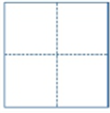

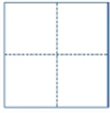
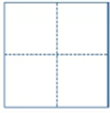
rì dāo shuǐ yuè


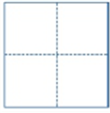
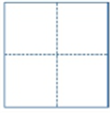
mù huǒ lì jīn
![]()
![]()
![]()
![]()
Question 2: Please classify the following Chinese words:
①心 ②耳 ③龟 ④马 ⑤木 ⑥牛 ⑦手 ⑧牙 ⑨鱼 ⑩豆
⑪羊 ⑫足 ⑬爪 ⑭口 ⑮竹 ⑯齿 ⑰瓜 ⑱角 ⑲果 ⑳禾
![]()
![]()
![]()
![]()
Animal Plant
![]()
![]()
Body Parts
Question 3: Connect the Chinese word to its corresponding Thai word
伞ร่ม
山เล็ก
水ภภูเขาูเขา
牛วัว
飞บิน
米ข้าว
小น้ำ
田สนาม
Question 4: Please write down the order of strokes of the following Chinese words:
子:
羽:
风:
父:
毛:
母:
女:
长:
小:
飞:
Question 5: Please fill in bracket the number of corresponding picture according to the Chinese word:
网( ) 田( ) 米( ) 衣( ) 井( )
山( ) 车( ) 力( ) 雨( ) 川( )
①![]() ②
②![]() ③
③![]() ④
④![]()
⑤![]() ⑥
⑥![]() ⑦
⑦![]() ⑧
⑧![]()
⑨![]() ⑩
⑩![]()